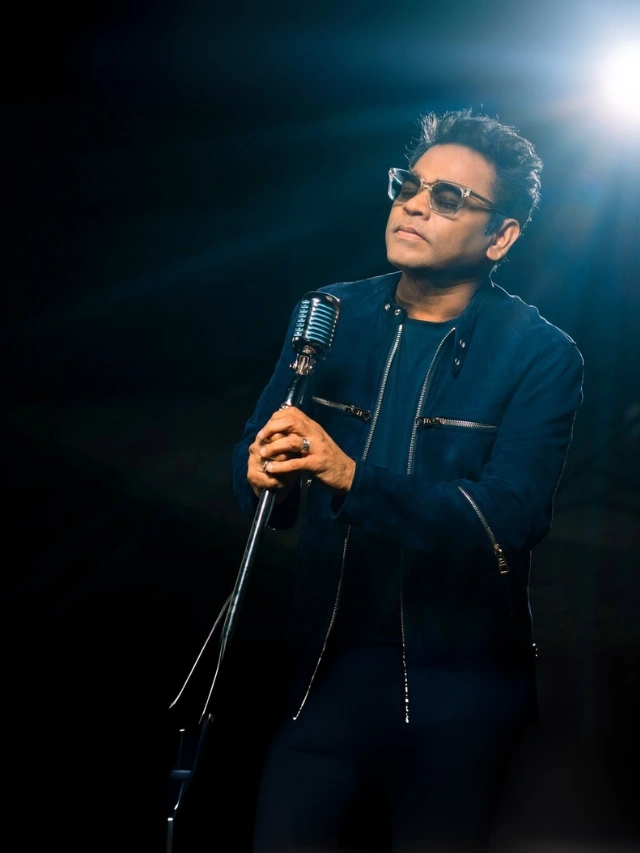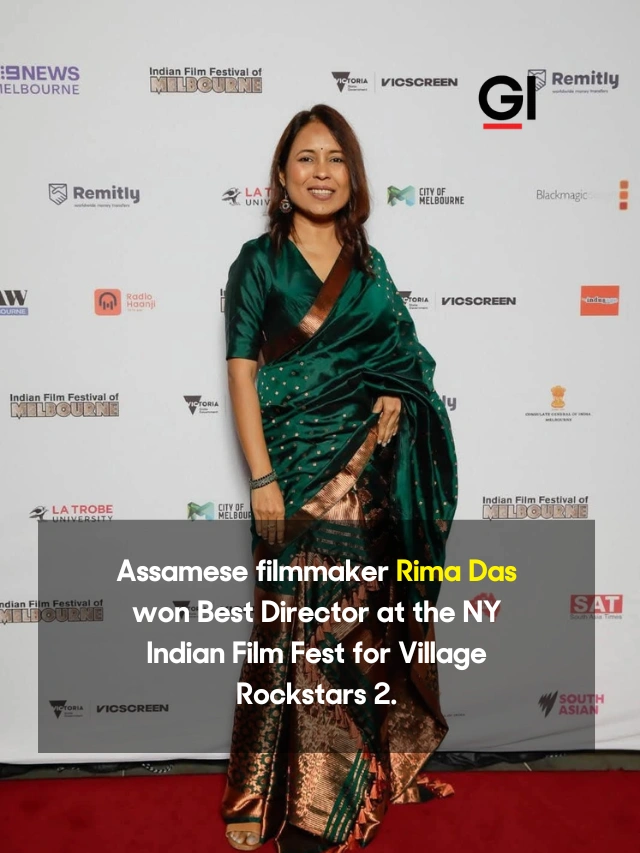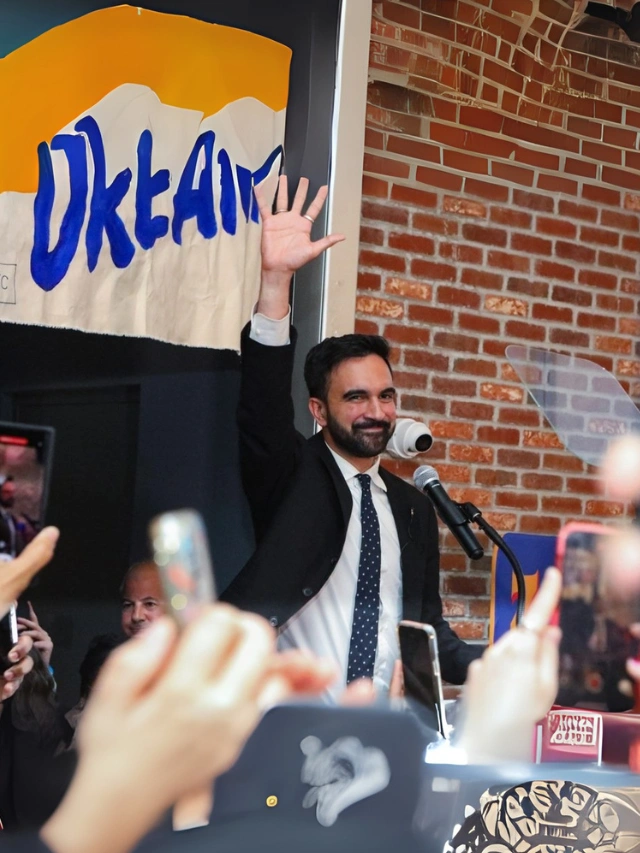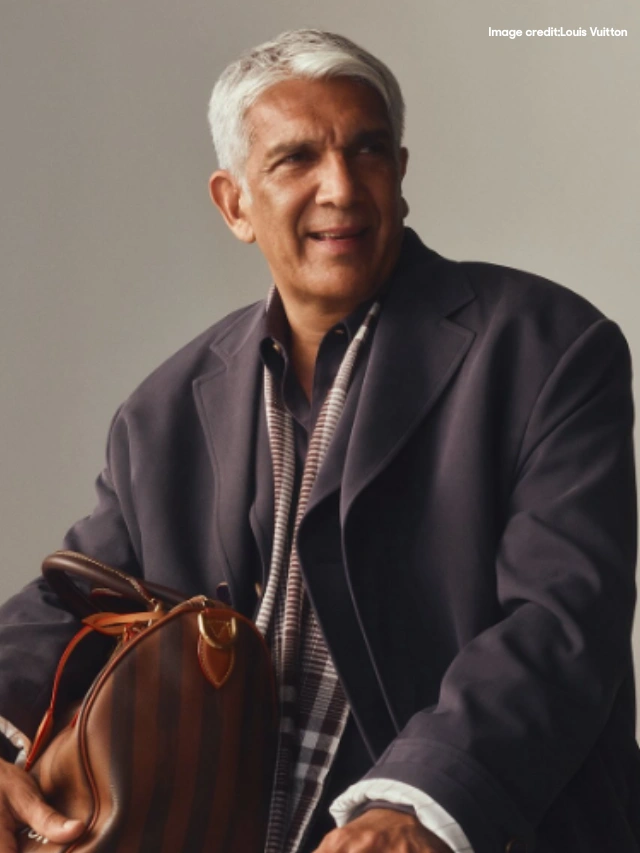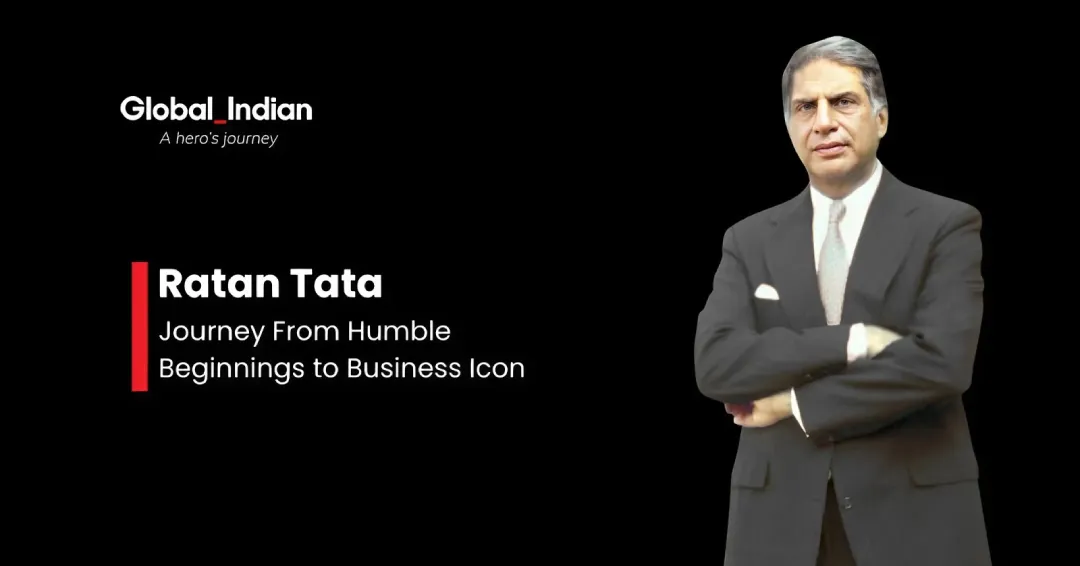
Ratan Tata
Ratan Tata revolutionized Indian business during his remarkable years as Tata Group chairman from 1991 to 2012. Born into the prestigious Tata family on December 28, 1937, in Mumbai, he started his career on Tata Steel’s shop floor in 1962. His visionary leadership led the conglomerate to grow its revenue over 40 times while profits soared more than 50 times. The group’s global presence expanded substantially under his watch.
Ratan Tata’s business acumen came from his strong educational background. He studied at Mumbai’s Cathedral and John Connon School before graduating from Cornell University in 1962 with an architecture degree. His bond with Cornell grew stronger over the years, and he became the university’s biggest international donor by contributing $50 million in 2008.
CEO’s | Actors | Politicians | Sports Stars
The Tata Group reached the international stage through mutually beneficial alliances under Ratan Tata’s business strategy. His leadership saw the group acquire major companies like Tetley in 2000, Corus in 2007, and Jaguar Land Rover in 2008. His vision went beyond business success. He launched social initiatives like the affordable Tata Nano car and the Cancer Care Program in 2017.
Ratan Tata’s family legacy covers both business excellence and steadfast dedication to giving back. India honored his contributions to education, healthcare, and rural development with the prestigious Padma Bhushan in 2000 and Padma Vibhushan in 2008. He invested in over 40 startups and showed deep passion for animal welfare. His final act of kindness was establishing a state-of-the-art animal hospital in Mumbai in 2024, before his passing at 86 on October 9, 2024.

Early Life and Family Background
A Heritage of Tradition and Transformation
Origins in Ancient Persia: Ratan Naval Tata was born to a prestigious Parsi Zoroastrian family on December 28, 1937, in Bombay (now Mumbai) during the British Raj period. The Tata ancestors belonged to a large group of Parsis who moved from Persia to India in the 8th century. They settled in Navsari, Gujarat, where they served as priests for more than twenty-five generations. This rich heritage became the foundation of India’s most influential business families. Jamsetji Tata—Ratan’s great-grandfather—started the Tata Group in 1868.
Familial Connections: Naval Tata and Sooni Commissariat were Ratan’s parents. Sooni was Tata Group founder Jamsetji Tata’s niece. This direct bloodline connected Ratan to the family legacy from birth. His life took an unexpected turn when his parents separated in 1948. He was just 10 years old. Lady Navajbai Tata, his grandmother, raised him after the separation.
Early Upbringing: Ratan and his younger brother Jimmy grew up in a baroque manor called Tata Palace in downtown Bombay. They lived a luxurious life—a Rolls-Royce drove Ratan to school. His grandmother made sure they stayed grounded with strong values. He later shared in rare interviews about his childhood: “We were very protected and we didn’t have many friends. I had to learn the piano and I played a lot of cricket”.
Ratan Tata’s birthplace and family roots
The Tata Lineage: The Tata family had become the life-blood of Indian industry before Ratan’s birth. Their ancestral home in Navsari sat in an area called Mota Falia’s Dasturwad, where Parsi clergy families lived. Jamsetji Nusserwanji Tata, born on March 3, 1839, transformed the family from religious tradition to state-of-the-art business leaders.
Educational Foundations: Ratan studied at prestigious institutions. He went to Campion School until 8th grade and then moved to Cathedral and John Connon School in Mumbai. He spoke about this time with humility: “I was shy [back then]. One thing I have never recovered from is a fear of public speaking… I particularly remember a mathematics teacher who, I felt, was determined that I never complete school. He almost succeeded”.
The influence of Lady Navajbai Tata
A Formidable Matriarch: Lady Navajbai Tata adopted Ratan through the J.N. Petit Parsi Orphanage. She broke barriers as the first woman director of Tata Sons in 1925. Her values shaped Ratan’s life and career substantially.
A Legacy of Leadership: Navajbai Tata married Sir Ratan Tata (Jamsetji Tata’s son) in 1892. She became a widow at 41 when he passed away in 1918. She managed his estate with exceptional business skills while upholding the Tata family’s philanthropic principles. JRD Tata valued her judgment so much that he consulted her on all vital company matters.
Philanthropy as Foundation: Lady Navajbai’s social commitment shaped Ratan’s worldview. She created the Ratan Tata Institute in Mumbai in 1928 to help poor and needy women find work. She gave generously from her personal funds to people who needed financial help. This spirit of helping others influenced Ratan’s later charitable work.
Ratan Tata’s relationship with his father Naval Tata
Naval Tata’s Journey: Naval Hormusji Tata’s life story shows remarkable change. He lost his father at age four, leaving his middle-class family struggling financially. Lady Navajbai Tata adopted him from the J.N. Petit Parsi Orphanage when he was 13. Naval often said: “I am grateful to God for giving me a chance to experience the pangs of poverty, which more than anything else, molded my character”.
A Complex Connection: Ratan and Naval shared a complicated bond. Both worked in the Tata Group—Naval was as visible as JRD Tata. Yet father and son had different personalities. Ratan wrote: “We were close and we were not. I left India when I was 15 for a decade. I would have to say that, as often happens between a father and a son, there was, perhaps, a divergence of views”.
Contrasting Personalities: Naval’s outgoing nature contrasted with his reserved eldest son. People knew him as “gregarious and outgoing, equally at home in the company of kings and commoners”. They handled conflict differently too. “My father hated confrontations. He was very good at negotiating settlements… Frequently, that settlement would involve a compromise. As younger and less mature people, we would fight with him for conceding ground in the quest for a solution,” Ratan shared later.
Extended Family: Naval married Simone Dunoyer, a Swiss businesswoman, in 1955 after divorcing Sooni in the mid-1940s. This marriage brought Ratan’s half-brother, Noel Tata, who later played important roles in the Tata business empire.
Education and Formative Years
Educational Journey: From Mumbai to Ivy League
Early Foundations: Ratan Tata started his schooling at Mumbai’s prestigious Campion School until 8th standard. He then went to Cathedral and John Connon School in Mumbai, and later to Bishop Cotton School in Shimla for senior secondary education. His years at these elite Indian schools built the foundation of his analytical thinking and discipline that shaped his leadership style.
Transition to America: Ratan Tata’s life changed when he moved to the United States at 17. He finished high school at Riverdale Country School in New York City in 1955. His time in America from 1955 to 1962 left a deep mark on him, and he would later say these years “influenced him tremendously”.
Schooling in India and the US
Multiple Cultural Influences: Ratan Tata studied at top schools across two continents, which gave him a unique global view. His father made him study in the United States instead of the United Kingdom—against young Ratan’s wishes. This turned out to be a great decision. His international education gave him different ways to solve problems that helped his business career later.
Academic Excellence: Tata was a brilliant student throughout his school years. People who knew him then said he was “brilliant in academics”. His sharp mind helped him excel in university and later in business where analytical thinking was key.
Architecture degree from Cornell University
Changing Academic Direction: Ratan Tata started at Cornell University in 1955 as a mechanical engineering student. He switched to architecture after two years. This change came from his growing interest in design thinking and solving spatial problems—skills he used later as a business leader.
Creative Problem-Solving: Cornell’s architectural program shaped Tata’s business approach deeply. He explained it best: “The miles of tracing paper that all of us wasted on one concept after another did one thing: It taught us that we didn’t stick with one thing. We tried and we tried, and we improved, and we reconceived what we had to do. It’s no different in business”. This way of trying different solutions became his trademark leadership style.
Seven-Year Journey: Tata spent seven years at Cornell and graduated with a bachelor’s degree in architecture in 1962. He learned about architecture and joined the Alpha Sigma Phi fraternity. These years gave him technical knowledge plus valuable social connections and leadership skills.
Lasting Connection: Tata kept strong ties with Cornell throughout his life. He became the university’s largest international donor in 2008 with a gift of INR 4219.02 million. This generous gift showed how much he valued the education that shaped his career.
Advanced Management Program at Harvard
Executive Education: Ratan Tata joined Harvard Business School’s Advanced Management Program in 1975, after working at Tata Group for thirteen years. The program helps experienced executives become better leaders and strategic thinkers—skills he needed for his growing role in the Tata empire.
Initial Struggles: Tata had a tough time when he started at Harvard. He felt “confused” and “humiliated” seeing his classmates’ achievements. He once said, “It was the only time in my life where I sat and crossed out day by day how many days were left before I could return to the normal world”.
Transformative Experience: The program changed everything for him despite the early challenges. Tata later said, “As I look back, those 13 weeks were probably the most important 13 weeks of my life. They transformed me and my perspective”. This intense program gave him advanced management skills that guided his future business decisions.
Lasting Impact: Tata showed his gratitude to Harvard with a INR 4219.02 million donation to build an executive center. The seven-story, glass-and-limestone Tata Hall has living space and classrooms for HBS’s executive education program. His gift helps future business leaders get the same life-changing education he received.
Starting at Tata Group: Humble Beginnings
From IBM Offer to Tata Legacy: Starting a Remarkable Experience
First Steps at Tata. Many people might think Ratan Tata’s first job offer after coming back to India came from the Tata Group. It actually came from IBM. JRD Tata, who was chairman then, didn’t like this at all. He told Ratan straight up, “you can’t be here in India and working for IBM”. This chat changed Ratan’s career path completely. He didn’t even have a resume ready. The story goes that he spent one evening typing it up on IBM’s electric typewriter – a funny start to what became one of India’s most remarkable business careers.
Career Launch: After his talk with JRD, Ratan Tata joined Tata Industries in 1962. This marked the start of his 60-year connection with the company. He started as an assistant in Tata Industries. It was a modest beginning for someone who would later lead the entire group. JRD wanted Ratan to learn the business from the ground up – this shaped his early work assignments.
First job at Tata Steel shop floor
Shop Floor Experience: Ratan Tata’s real start with the Tata Group began on Tata Steel’s shop floor in 1962, though some records show 1961. He worked among blue-collar workers in the tough environment of a steel mill. He put in long hours in intense heat and learned industrial operations firsthand – quite unusual for someone with his background and education.
Training Period: After his time at Tata Steel, Ratan moved to the Tata Iron and Steel Company (Tisco, now Tata Steel) facility in Jamshedpur in 1963. The company made him a technical officer in Tisco’s engineering division in 1965. This role made good use of his architectural and engineering skills while building his business knowledge.
Early roles in Tata Motors and TCS
Diversified Experience: Ratan trained for six months at the Jamshedpur plant of Tata Engineering and Locomotive Company (now Tata Motors) in 1962. His work across different Tata companies gave him a solid grasp of the group’s various businesses. This knowledge proved valuable in his future leadership roles.
International Assignment: Ratan Tata became the Tata Group’s resident representative in Australia in 1969. This role expanded his global business understanding. He came back to India in 1970 and worked briefly at Tata Consultancy Services, which was just starting out in software. These roles gave him both local and global business insights.
Leadership Test: The year 1971 brought Ratan his first big leadership challenge. He became director-in-charge of National Radio and Electronics Company (NELCO). He turned this struggling company around at first, but NELCO later failed during tough economic times. All the same, this taught him crucial lessons about handling business crises.
Lessons from working under JRD Tata
Mentorship Value: Learning from JRD Tata – the group’s leader since 1938 – gave Ratan an incredible business education. JRD’s reputation stood on his high ethical standards. He never bribed politicians or used the black market. These principles shaped Ratan’s own leadership style and approach to running companies.
Ethical Foundations: Someone once asked what Ratan learned from JRD Tata. He said, “his sense of justice which was prevalent. His value system, his simplicity, and his sense of justice have stayed with me and I hope I can copy them even half”. Without doubt, these core values guided Ratan’s business career and charitable work.
Quiet Apprenticeship: Through the 1970s and 1980s, Ratan Tata worked quietly in various Tata Group companies. He waited for his chance while learning how the conglomerate worked. This time of patient learning and varied experience prepared him well. He succeeded JRD Tata as chairman of the Tata Group in 1991.
Rise to Leadership: Becoming Chairman
The Challenging Transition
Succession Milestone: The Tata Group faced a defining moment in 1991 when J.R.D. Tata stepped down as chairman after 50 years at the helm. He named Ratan Tata as his successor. This leadership change coincided with India’s economic reforms that opened the doors to global competition and sparked rapid growth. Ratan Tata’s early years saw him tackle the massive challenge of turning a loose network of companies into a unified global powerhouse.
Challenges in taking over from JRD Tata
Contested Succession: Tata family members and business managers strongly opposed this succession. “J.R.D. got clubbed with nepotism and I was branded as the wrong choice,” Ratan Tata later shared in a Facebook interview. He inherited a profitable yet fragmented enterprise that lacked unity and a clear long-term direction.
Timing Complexities: The economic reforms of 1991 brought new threats to the group. The most pressing concern was possible hostile takeovers because Tata Sons held relatively small stakes in its major listed companies. This external pressure made the internal resistance even harder for Ratan Tata to handle, especially from leaders who had thrived under JRD’s relaxed management approach.
Leadership Philosophy Shift: JRD’s style gave subsidiary leaders substantial freedom. Ratan Tata saw things differently – he wanted an integrated group sharing common values and strategic goals. This radical change in management thinking meant the organization needed major restructuring.
Initial resistance from senior executives
Powerful Opponents: Ratan Tata took charge at 54 and faced strong opposition from veteran leaders. Executives like Russi Mody, Ajit Kerkar, and Darbari Seth had grown powerful under JRD Tata’s leadership. They ran their businesses almost like personal kingdoms. “The opposition from within the organization was immense. People thought I wasn’t worthy of the position,” Ratan Tata reflected later.
Managerial Complacency: The group had become too comfortable with its success. “There were times when some board members would even fall asleep during meetings,” Ratan noted. Breaking this organizational inertia needed both patience and decisive action.
Familial Challenges: Beyond professional conflicts, family politics complicated matters. Company heads tried to create their own dynasties within Tata subsidiaries. Russi Mody promoted his adopted son Aditya Kashyap to deputy MD without board approval. Similarly, Darbari Seth made his son Manu Seth the MD of Tata Chemicals.
Implementing structural reforms
Strategic Retirement Policy: Ratan Tata brought bold changes to strengthen his leadership. His 1992 retirement policy required directors to step down at 75. This rule helped ease out entrenched leaders smoothly. Mody retired in 1993, Seth in 1994, and Kerkar had to resign in 1997 after foreign exchange law violations.
Organizational Restructuring: The new chairman created policies to strengthen central control. Subsidiaries now reported directly to the group office and contributed profits to build the Tata brand. He pushed for innovation and gave young talent more responsibilities.
Streamlined Operations: The group combined overlapping operations between companies and left unrelated businesses to focus on global growth. This transformation showed in the numbers – revenue shifted from mainly commodity sales when he started to mostly brand-driven income by his retirement.
Remarkable Results: These changes brought amazing success. The Tata Group’s revenue grew more than 40 times and profit increased over 50 times during Ratan Tata’s 21-year leadership. His vision turned a scattered group of companies into a global competitor across 10 business sectors.
Global Expansion and Business Acumen
Strategic Global Vision
Bold Expansion Plans: After taking charge of the Tata Group, Ratan Tata started a mission to make the company international. He wanted half of the company’s revenue to come from overseas markets. His vision paid off. The Tata Group spread to 100 countries by his retirement in 2012, with its products reaching more than 150 nations worldwide.
Acquisition of Tetley, Corus, and Jaguar Land Rover
Tetley Breakthrough: Ratan Tata’s first big international move came in 2000. Tata Tea bought Tetley Group for 271 million euros. This was a bold step since Tetley was three times bigger than Tata Tea. The deal made Tata a major player in the global tea market and paved the way for more international purchases.
Steel Supremacy: The year 2007 saw India’s largest foreign acquisition. Tata Steel bought Anglo-Dutch steelmaker Corus for about INR 1096.95 billion. The deal tripled Tata Steel’s capacity and spread its steel-making risks across different markets. The purchase gave Tata Steel access to new technology, products, and markets despite later economic hurdles.
Automotive Triumph: The most notable purchase happened in 2008. Tata Motors bought Jaguar Land Rover from Ford Motor Company for INR 194.08 billion. Ford had earlier rejected Tata’s passenger car business and even laughed at the brand’s lack of expertise. JLR turned out to be a huge success and brought in more than 90 percent of Tata Motors’ profits by 2015.
Vision behind Tata Nano
Compassionate Innovation: Ratan Tata’s idea for the Tata Nano came from a simple observation. He saw Indian families riding dangerously on scooters, often with children squeezed between parents on wet roads. His background in architecture helped as he drew the original sketches for both the Nano and Indica models.
People’s Car: The Tata Nano hit the market in 2008 as India’s first “one lakh” car, priced at about INR 109,695. Tata saw it as a safer choice for families moving from two-wheelers to cars. The team worked hard to create a fuel-efficient engine while keeping costs low.
Marketing Misstep: The Nano started well but soon faced problems. The marketing team called it “the cheapest car” instead of “the most affordable car,” which hurt its image. People stayed away from buying what was known as “the cheapest car”. Production stopped about ten years after its launch.
Turning Tata into a global brand
Transformative Growth: Ratan Tata led the group for 21 years. The company’s value grew from INR 337.52 billion when he started to INR 6497.29 billion at his retirement in 2012. Today, the group includes 29 listed companies with a combined market value of INR 34005.32 billion as of August 2024.
Diversified Portfolio: Ratan Tata reshaped the scene by focusing on state-of-the-art technology and giving young talent more responsibility. The group changed from a commodity-focused business to one driven by brands. This move helped the company grow in various fields like steel, automobiles, IT, and telecommunications.
Global Employer: The Tata Group became Britain’s biggest employer of blue-collar workers by 2012. This was quite a turn of events – a business from a former colony now owned key assets in the country that once ruled it. Historian Mircea Raianu called this “the empire striking back”.
Philanthropy and Social Impact
Legacy of Compassion Through Strategic Philanthropy
Visionary Giving: Ratan Tata’s philanthropic philosophy exceeded traditional charity. He embraced strategic interventions that created lasting effects. Under his leadership, Tata Trusts evolved beyond conventional philanthropy into results-oriented systemic initiatives. He emphasized addressing society’s changing needs and extended the Trusts’ reach to underserved rural communities and vulnerable populations.
Tata Trusts and strategic giving
Trust Architecture: The Tata Trusts, 131 years old, stands as one of India’s oldest and largest philanthropic organizations. Ratan Tata’s journey began in 1965 when he joined the Sir Ratan Tata Trust. He became its chairman in 1989. The Trusts distributed ₹456.42 crore in FY2023 alone. Their work spans education, healthcare, rural development, and disaster relief.
Empowerment Focus: Starting 1993, Ratan Tata made women’s advancement a priority. He directed additional funds toward women’s and children’s health, education, and livelihood development. This focus recognized how educated women help their communities grow both economically and socially.
Major donations to education and healthcare
Educational Impact: Ratan Tata made substantial contributions to global education. He donated ₹4219.02 million to Harvard Business School for an executive education center. He created a ₹2362.65 million scholarship fund at Cornell University that supports about 20 Indian students, whatever their financial situation. He invested ₹750 million in the Center for Neuroscience at the Indian Institute of Science to advance Alzheimer’s research.
Healthcare Transformation: Ratan Tata directed substantial resources through Tata Trusts to expand cancer care infrastructure in underserved regions. His personal involvement led to the creation of Kolkata’s Tata Medical Center for advanced cancer treatment. This center especially benefits patients with limited means. The Tata Group and Trusts pledged over ₹1,500 crore for healthcare infrastructure, PPE, and vaccine research during the COVID-19 pandemic.
Support for disaster relief and rural development
Emergency Response: Tata Trusts responds quickly to natural calamities. They provide essential aid like safe drinking water, medical support, and daily necessities. Their relief work spans multiple affected regions including Assam, Mizoram, Kerala, Odisha, and other states.
Rural Transformation: The Transforming Rural India initiative operates in 342 villages of Madhya Pradesh. It covers 1,035 habitations where 710 community volunteers implement health and nutrition programs. Their education programs reach 566 villages and support 198 schools. These efforts involve partnerships with state governments and engage 731 community volunteers.
Personal Life, Values, and Interests
The Private World Behind the Persona
Steadfast Choice: Ratan Tata’s personal life choices mirrored his leadership style with careful consideration. He chose a lifestyle without alcohol or smoking and stayed unmarried throughout his life. His Mumbai home became a sanctuary filled with his beloved German Shepherds and an extensive book collection that showed his preference for solitude and intellectual pursuits.
Why Ratan Tata never married
Unfulfilled Romance: Ratan Tata’s heart was captured during his time at an architectural firm in Los Angeles. He wanted to settle down. His grandmother’s failing health called him back to India. The couple made plans for his girlfriend to follow him, but the 1962 Indo-China war changed everything. Her parents wouldn’t let her move, which ended up ending their relationship.
Multiple Opportunities: Ratan Tata shared with CNN International that he “came seriously close to getting married four times”. “I backed off in fear or for one reason or another,” he explained. At 63, he remained open to marriage, saying it could happen “if the right person were there and I had the right feelings”.
Love for dogs and animal welfare
Canine Companions: Tito and Tango, his German Shepherds, shared his book-filled Mumbai home. His connection with them ran deep—he even skipped a lifetime achievement award ceremony with Prince Charles in London in 2018 to stay with his sick dog.
Animal Advocacy: Tata’s leadership brought shelter to stray dogs at Bombay House (Tata headquarters) and the iconic Taj Mahal Hotel. His commitment to animal care showed in 2023 when he created the Rs 165 crore Tata Trusts Small Animal Hospital in Mumbai. This modern facility offers round-the-clock emergency care.
Passion for cars, flying, and architecture
Architectural Foundations: Cornell gave Tata his architectural training, which he used selectively but effectively. He designed his mother’s house, an Alibaug home, and his seafront Mumbai residence. His architectural background gave him sharp business leadership skills and a keen sense of esthetics.
Aviation Enthusiast: Tata earned his pilot’s license and made history as the first Indian to fly an F-16 fighter jet. His love for flying started during his Cornell days and stayed with him throughout his life.
Automotive Aficionado: Prestigious cars like Ferrari and Jaguar filled his collection. His personal love for automobiles aligned perfectly with his business achievements, especially when he bought and transformed Jaguar Land Rover.
Final Years, Death, and Will
A Legacy of Transformation
Visionary Leadership: Ratan Tata’s path from the Tata Steel shop floor to the chairman’s office reshaped both the Tata Group and Indian business. His 21-year leadership saw the company’s revenue multiply 40 times as it spread across 100 countries. Many established leaders saw him as “unworthy,” but he carefully rebuilt the organization. He brought in retirement policies and made operations more efficient to build a unified global company that shared the same values and direction.
Values That Went Beyond Business
Ethical Foundation: Ratan Tata made business decisions based on values his grandmother Lady Navajbai and mentor JRD Tata taught him—integrity, simplicity, and justice. These principles guided how he bought companies, created state-of-the-art solutions, and gave back to society. Other companies might have cut corners for quick profits, but Tata kept his standards high. He refused to take part in corrupt practices even when they seemed like easy options. His leadership set new standards for ethical business behavior in India and worldwide.
Global Vision with Local Heart
Strategic Acquisitions: Ratan Tata made his boldest moves by buying international companies that changed the Group’s global reach. The purchase of Tetley, Corus, and Jaguar Land Rover turned Tata from an Indian company into a global business giant. He never forgot local needs while creating new solutions. The Tata Nano came to life after he saw families dangerously riding scooters in Indian traffic. The Nano had marketing problems, but it showed Tata’s dedication to solving society’s problems through business.
Philanthropy as Purpose
Strategic Giving: Ratan Tata didn’t just give money away—he approached charity like a business problem. Under his watch, Tata Trusts focused on making lasting changes in education, healthcare, rural development, and disaster relief. He gave personally to Harvard, Cornell, and the Indian Institute of Science because he believed in advancing knowledge. He knew women played a key role in community growth, which showed his deep understanding of how society progresses.
The Man Behind the Business
Personal Choices: Behind the business giant was a private person whose choices showed his thoughtful nature. He “seriously close to getting married four times” but chose to live alone with his German Shepherds as companions. His background in architecture, love for flying, and passion for cars showed a man of many interests beyond running companies. Despite his wealth and influence, he lived simply and followed the same values that guided his business choices.
Enduring Influence
Transformative Impact: Ratan Tata changed more than just numbers and company buyouts—he changed how Indian businesses work today. Until October 2024, he shaped new companies by investing in over 40 startups and helped animals through his welfare programs. His biggest achievement might be showing that business success and ethical leadership work better together. As India grows economically, Ratan Tata’s legacy shows how companies can help their country grow and do good while succeeding globally
Also Read: Mindy Kaling, journey of an accomplished actress, screenwriter, and producer.
FAQ:
What is Ratan Tata’s net worth?
At the time of his passing in October 2024, Ratan Tata’s net worth was estimated to be around $1 billion. Much of his wealth was held in charitable trusts.
Is Ratan Tata alive?
No, Ratan Tata passed away on October 9, 2024.
Who is Ratan Tata’s wife?
Ratan Tata never married.
What was Ratan Tata’s age at the time of his death?
Ratan Tata was born on December 28, 1937, and passed away at the age of 86.
Who are the members of Ratan Tata’s family?
Ratan Tata was the son of Naval Tata and Sooni Tata. His stepmother was Simone Tata, and his half-brother is Noel Tata.
Did Ratan Tata have any children?
No, Ratan Tata did not have any children.
What was Ratan Tata’s educational background?
Ratan Tata studied at Cathedral and John Connon School in Mumbai, Bishop Cotton School in Shimla, graduated from Cornell University’s College of Architecture, and completed the Advanced Management Program at Harvard Business School.
Can you share some famous Ratan Tata quotes?
One of Ratan Tata’s well-known quotes is: “I don’t believe in taking right decisions. I take decisions and then make them right.”
What was Ratan Tata’s religion?
Ratan Tata belonged to the Parsi community and followed Zoroastrianism.
What awards did Ratan Tata receive?
Ratan Tata received several honors, including the Padma Bhushan (2000), Padma Vibhushan (2008), and numerous international awards for business and philanthropy.
Who was Ratan Tata’s brother?
Ratan Tata’s half-brother is Noel Tata.
Who was Ratan Tata’s father?
Ratan Tata’s father was Naval Tata.

